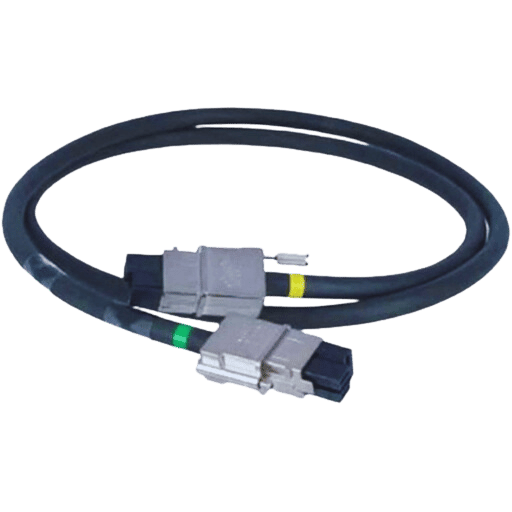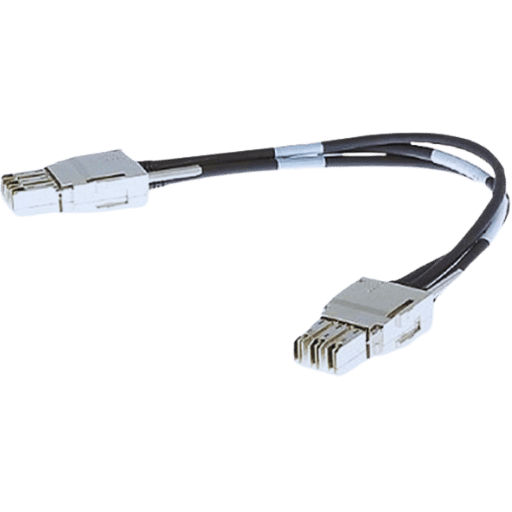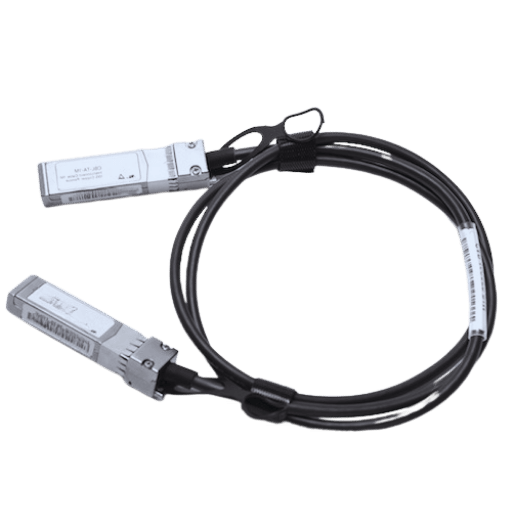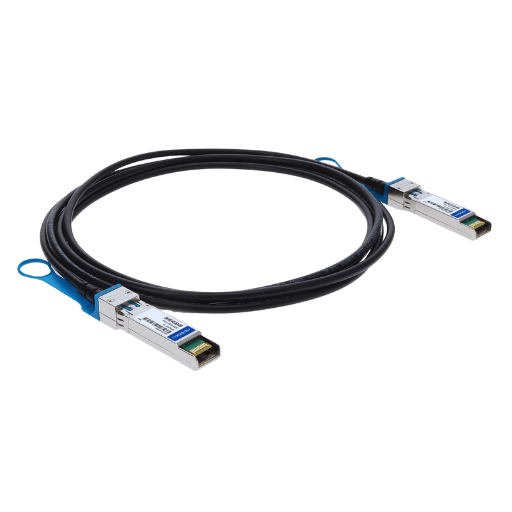Regarding the dynamic sphere of network infrastructure, providing cabling systems that can guarantee the performance of throughput and connectivity is a must. The Cisco Meraki MA-CBL-TA remains one of the key 1m passive direct attach copper twinax cables to emerge designed for use with modern enterprise networks and data centers. This blog aims to view specific aspects and advantages of the Meraki MA CBL TA 1M and argue how its effective parameters may more positively influence 10G network support operations. It will focus on characteristics such as technical configuration and benefits, how it enables growth in coverage and the strength of the network structure. So whether you belong to a group of network engineers or are an IT personnel looking for a better infrastructure enhancement, this article is for you as it comprehensively explains the importance of this particular networking equipment.

The Cisco Meraki MA-CBL-TA-1M has incredible performance features. It is a passive, direct-attach copper cable with a 1-meter length that is appropriate for use over short distances. It is built to provide a cost-effective means of data communication within the confines of a rack or between closely mounted racks, especially for 10G SFP links. It has direct SFP+ connectors at the ends, allowing it to transmit data at 10Gbps, minimal latency, and maximum data flow. It has been designed to be reliable and durable due to its copper twinax construction, which ensures that there will be a minimum amount of signal loss while signaling robust physical characteristics. As the passive network component standards have approved it, MA-CBL-TA-1M is able to meet the requirements of modern enterprise networks.
The Cisco Meraki MA-CBL-TA-1M cable has unique characteristics that make it ideal for use in high-density networks. One such characteristic is the passive twinaxial design, which is best for short-range communication and communication between adjacent racks. The SFP+ connectors that are present in the Meraki MA-CBL-TA-1M allow for the exchange of data at a maximum of 10 Gbit/s, which is critical in ensuring adequate throughput levels and low latencies in IT compliance. The cable’s construction guarantees great reliability that meets the 10G requirements while minimizing signal degradation. Because of industry compliance, interoperable wire networks can also be employed using the Meraki MA-CBL-TA-1M compatible 10 G SFP. The cable’s 1-meter size is perfect for managing Alder Lake’s clutter and making cable management easy when dealing with data centers and corporate networks.
Due to some of its salient features, the Direct Attach Copper (DAC) Twinax Cable is popularly preferred in high-performance networking. It is worth mentioning that the cable has a high data rate of up to 10 Gbps, which is fundamental in instances where large volumes of data are transmitted quickly. Since the cable is passively designed, there is no requirement for additional power connections, which further simplifies the installation and minimizes power waste. The strong construction of the wires using copper twinax increases the integrity of the Signals and reduces the loss at distances of about 7 meters. Moreover, to support SFP+ interfaces, the cable is specifically designed to work with such connections, making it easier to upgrade or expand existing wiring without hassle. The features and characteristics of the DAC Twinax Cable make it a cost-effective and reliable solution in modern-day interconnect networks.
The Cisco Meraki MA-CBL-TA-1M, owing to its structure designed around high-speed 10G applications, facilitates high-efficiency data transfer within the network. This fully addresses the requirements of for the equipment with a data transmission of 10 Gbps since it is a 1-meter copper twinax cable, which minimizes latency and nausea or even noise in high-demand conditions. Its fabrication fosters a passive regime that ensures sufficient power savings and easy network deployments without extra power supplies, which is perfect for 10G environments. In addition, SFP+ has become a worldwide industry standard, which increases the possibility of connecting various network devices because such compatibility is widespread on the market. All of these enhance the effectiveness and reliability of operations in an enterprise network environment.

To locate the datasheet for MA-CBL-TA-1M from the Cisco Meraki official datasheet library, I start off with the primary Cisco Meraki documentation web page, which has all the technical documentation and product characteristics in one place. This site lets me filter the equipment by the model number, category, or any test specification archived on this page. Further, I also checked other sites of interest, such as TechSpecs.com and NetworkingHardware.com, which contain documents and reviews of networking devices. These sites are useful and sometimes contain links to the original datasheet so that I always have the necessary information to carry out my planning and implementation functions for the network without finding the most recent updates.
The cables supported by Cisco extend various protocols, including FCoE. I discovered these cables are very critical on global networks. Global uptake of data centers and fiber optics networks requires such wires. They illustrate how networking takes place, especially in times of heavy reliance on networking resources. The passive design is active in this regard. It is also pointed out that cabling helpers build greater possibilities as they enhance device integration without additional power. In addition, the statistics presented in the document corroborate SFP+ compliance for additional cross-compatibility with enterprise focus on greater ease on deployment matters. Such relevant information correspond with the details presented in the inventory of separate cables and parts on Cisco’s official dealing and tech specifications websites like TechSpecs.com.

As a result of ensuring that the MA-CBL-TA-1M is well supported by the various products within the Cisco ecosystem, several establishments have documented the SNMP’s overall praises. This product is designed to function with the Cisco Switches of the 9000 series. With that, they would still be able to reach Gbps worth of data, which would perfectly complement the design of the MA-CBL-TA-1M. Furthermore, their MA-CBL-TA-1M size will allow tighter integration within data centers where performance is crucial. However, tech review sites like TechRadar and Network World showcase the Ciscos Nexus series, better suited for higher performance settings. All in all, the MA-CBL-TA-1M can be best optimized when used within Cisco’s tight ecosystem of devices. Not only that but because of the level of integration achieved, networks in a more complex structure can also be optimized.
Incorporating the use of fiber optic and twinax cable solutions requires addressing the particular details and characteristics that are specific to your network set up. As TechRadar, Fiber Optic Association, and Network World noted, the broadband capability and the low signal level degradation make fiber optic cables most effective for use over long distances for data transmission. They are perfect for connecting geographically disparate network parts together. On the other hand, the twinax cable MA-CBL-TA-1M is designed to achieve high speed at short distances, and it is an application that is useful in interconnecting devices within the same data center rack. In this regard, it would be more efficient to apply a hybrid system that uses fiber optic cables as backbone connectors and twinax cables for short links to obtain great speed, high-performance level, and moderate coverage in all equipment uses.
Various benefits come with using compatible transceivers in the network infrastructure. First of all, they allow users to integrate the new equipment with the existing network equipment without any compatibility concerns that hinder operations. This compatibility improves the performance because the system transceivers are built to perform within the stated specification. Moreover, employing these products is cost-effective as the companies do not need to pay more for the vendor-branded ones, which deliver similar end results. This provides great benefits in terms of cost, especially for large-scale networks that have many transceivers. Furthermore, buying transceivers from well-known third-party suppliers also means that goods and warranty services accompany them, ensuring continuous functionality and security for the network managers. Finally, compatible transceivers can provide an opportunity for a variety of products in scope and availability, especially needed for different network solutions and expansions.

The MA-CBL-TA-1M gets star ratings from users who are pleased with its construction and performance. Users of the Meraki twinax cable with SFP often comment on its sturdy builds which add years of effectiveness in harsh conditions experienced in data centers. They comment on the high data transfer rate and stability the product guarantees for a very long time. In addition, a good number of clients appreciate the simplicity of the installation, which helps with quicker network configuration and less operational disruption. On the whole, the MA-CBL-TA-1M is considered to be a cheaper option that performs and also has a quality not lower than what is expected by clients.
One of the key issues users voice on the MA-CBL-TA-1M concerns the connectivity with some devices. To solve this issue, it is advisable to check the manufacturers’ stated device compatibility and specifications before buying. Another noticeable issue is the difficulty of resolving 10G SFP connectivity problems. Customers should read through the extensive support materials available and use any technical support services offered. Also, product availability sometimes raises questions due to great demand; ordering in advance or seeking other suppliers can help overcome this problem. Such proactive measures help to maintain prevention systems working to achieve further comfort and good operation of Cisco Meraki MA-CBL-TA-1M compatible 10G.

It is imperative to understand that directly attached copper cables combined with fiber optic types of cables have different functions and are chosen based on the requirements of the network in place and the distance needed to be covered. Most of the time, DAC cables are used for close-range interconnects in data centers, relying on the high density of connections, Which are cost-effective and easy to deploy. For short range applications, DAC cables would be sufficient enough in terms of data rates expected, however, this is not the case in long distance links as limited cable distances do not compare to fibre optic alternatives. On the contrary, fiber optic cabling systems provide a much better experience for long-haul links due to their high bandwidth and speed capabilities. However, links that are non-fiber optic would most times be affected by EMC, which would interfere with the data integrity of the cabling systems. Although fiber optic cabling systems may require a higher capital investment towards their initial costs and a more complicated installation, these are preferable traits in environments where data needs to be transmitted at high speeds and long ranges.
Passive Direct Attach Copper cables have specific features necessary for their installation and usage within a computer network, making them very popular among IT specialists. There is no requirement for a cross-connection or a plugging-in of the module, so no overhead cost is incurred. Also, as long as the communications appliance is functioning, passive DACs have no additional costs. Therefore, these products are economical and great energy-saving. Furthermore, they are lovely for servers that are close together, so there is no delay when moving data around. On the other hand, while passive DACs can travel shorter distances than the active alternatives, they are also cheap and easy to use and, as such, are ideal in environments with a lot of congestion.
The need for high-speed connections was met using a 1-meter Twinax cable, which is particularly suited for low-range connections within the data center. Latency and signal integrity are some of the main critical advantages of this type of infrastructure. The shorter length reduces the chances of signal attenuation and EMI, thus ensuring a constant data transfer rate. Furthermore, a 1-meter cable minimizes the mass of cabling while still addressing challenges caused by the densely populated racks, optimizing the cost. This size, while cheaper when compared to longer ones, is more suitable for the types of interconnects used in environments that require high-speed connections and optimal distances.

A: The Cisco Meraki MA-CBL-TA-1M passive direct-attach copper twinax cable is one meter, or three point three feet, in length. It has SFP+ connectors on both ends and is designed for use with Meraki switches in a 10-gigabit ethernet environment.
A: The MA-CBL-TA-1M is compatible with the Meraki MS225, MS250, MS350, MS355, MS390, MS410, MS425, and MSS security appliances and MX250, MX450, and more. MX105, MX400, and MX600 series devices are also compatible with this cable.
A: Definitely not. The MA-CBL-TA-1M is not an optical cable; it is a copper twinax cable designed for short-distance high-speed connections employing SFPs. Other optical cables are more suited for long distances and other conditions, while this one isn’t suited for high-speed connections or short distances.
A: The MA-CBL-TA-1M can transmit 10GbE or 10 Gigabit Ethernet data. It is a 10GBASE CU SFP+ direct-attach cable, ideal for Meraki networks when high-speed connections are required.
A: Cicso Meraki MA-CBL-TA-1M orders are often quickly delivered; however, depending on stock availability and your location, the time frame may vary. Most suppliers, such as Rhino Networks, ship out orders that are in stock within 24 to 48 hours. To get better estimates regarding your order delivery time, you should confirm these details with the supplier on order placement.
A: Although the MA-CBL-TA-1M is intended for use with Meraki devices, it can also work with other Cisco devices and possibly some third-party devices that are SFP+ compliant. However, it’s still advisable to check the compatibility with the devices on which you plan to perform integration.
A: As this cable is connected to a machine, the MA-CBL-TA-1M Meraki should not be purchased and sold without a lifetime limited warranty. This warranty typically addresses manufacturing defects and material defects in normal usage conditions. Always consult your specific retailer for warranty plan particulars.
A: Yes, the MA-CBL-TA-1M does work with the Meraki MS350, MS355, and MS390 series, but does this mean that it is usable only for those specific switches? The low latency speeds elevate stack performance in your Meraki network, and the MA-CBL-TA-1M ensures that connections remain solid.